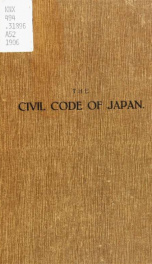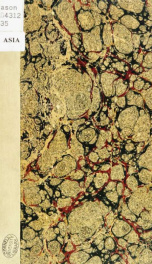Japan

Japan (日本, Nihon or Nippon?, officially 日本国 Nippon-koku or Nihon-koku) is an island country in East Asia. Located in the Pacific Ocean, it lies to the east of the Sea of Japan, People's Republic of China, North Korea, South Korea and Russia, stretching from the Sea of Okhotsk in the north to the East China Sea and Taiwan in the south. The characters which make up Japan's name mean "sun-origin", which is why Japan is sometimes identified as the "Land of the Rising Sun". Japan is an archipelago of 6,852 islands.[8] The four largest islands are Honshū, Hokkaidō, Kyūshū and Shikoku, together accounting for 97% of Japan's land area. Most of the islands are mountainous, many volcanic; for example, Japan’s highest peak, Mount Fuji, is a volcano. Japan has the world's tenth-largest population, with about 128 million people. The Greater Tokyo Area, which includes the de facto capital city of Tokyo and several surrounding prefectures, is the largest metropolitan area in the world, with over 30 million residents. Archaeological research indicates that people were living on the islands of Japan as early as the Upper Paleolithic period. The first written mention of Japan begins with brief appearances in Chinese history texts from the first century A.D. Influence from the outside world followed by long periods of isolation has characterized Japan's history. Since adopting its constitution in 1947, Japan has maintained a unitary constitutional monarchy with an emperor and an elected parliament, the Diet. A major economic power,[9] Japan has the world's second-largest economy by nominal GDP and the third largest in purchasing power parity. It is also the world's fourth largest exporter and sixth largest importer. It is also the only Asian country in the G8. Although Japan has officially renounced its right to declare war, it maintains a modern and extensive military force which is employed in self-defense and peacekeeping roles. It is a developed country with very high living standards (10th highest HDI). Japan has the highest life expectancy of any country in the world (according to both the UN and WHO estimates) and the third lowest infant mortality rate.[10][11] The English word Japan is an exonym. The Japanese names for Japan are Nippon (にっぽん?) ( listen (help·info)) and Nihon (にほん?) ( listen (help·info)). They are both written in Japanese using the kanji 日本. The Japanese name Nippon is used for most official purposes, including on Japanese money, postage stamps, and for many international sporting events. Nihon is a more casual term and the most frequently used in contemporary speech. Japanese people refer to themselves as Nihonjin (日本人?) and they call their language Nihongo (日本語?). Both Nippon and Nihon literally mean "the sun's origin" and are often translated as the Land of the Rising Sun. This nomenclature comes from Imperial correspondence with the Chinese Sui Dynasty and refers to Japan's eastward position relative to China. Before Japan had relations with China, it was known as Yamato and Hi no moto, which means "source of the sun".[12] The English word for Japan came to the West from early trade routes. The early Mandarin or possibly Wu Chinese (呉語) word for Japan was recorded by Marco Polo as Cipangu. In modern Shanghainese, a Wu dialect, the pronunciation of characters 日本 'Japan' is Zeppen [zəʔpən]; in Wu, the character 日 has two pronunciations, informal (白讀?) [niʔ] and formal (文讀?) [zəʔ]. (In some southern Wu dialects, 日本 is pronounced [niʔpən], similar to its pronunciation in Japanese.) The old Malay word for Japan, Jepang (now spelled Jepun in Malaysia, though still spelled Jepang in Indonesia), was borrowed from a Chinese language, and this Malay word was encountered by Portuguese traders in Malacca in the 16th century. It is thought the Portuguese traders were the first to bring the word to Europe. It was first recorded in English in a 1565 letter spelled Giapan.[13] The first signs of occupation on the Japanese Archipelago appeared with a Paleolithic culture around 30,000 BC, followed from around 14,000 BC by the Jōmon period, a Mesolithic to Neolithic semi-sedentary hunter-gatherer (possibly Ainu)[14] culture of pit dwelling and a rudimentary form of agriculture. Decorated clay vessels from this period, often with plaited patterns, are some of the oldest surviving examples of pottery in the world. The Yayoi period, starting around 500 BC, saw the introduction of many new practices, such as wet-rice farming[15], a new style of pottery[16] and Metallurgy [17][18] brought by migrants from China and Korea. The Japanese first appear in written history in China’s Book of Han. According to the Chinese Records of Three Kingdoms, the most powerful kingdom on the archipelago during the third century was called Yamataikoku. Buddhism was first introduced to Japan from Baekje of the Korean Peninsula, but the subsequent development of Japanese Buddhism and Buddhist sculptures were primarily influenced by China.[19] Despite early resistance, Buddhism was promoted by the ruling class and eventually gained growing acceptance since the Asuka period.[20] The Nara period of the eighth century marked the first emergence of a strong central Japanese state, centered on an imperial court in the city of Heijō-kyō, or modern-day Nara. In addition to the continuing adoption of Chinese administrative practices, the Nara period is characterized by the appearance of a nascent written literature with the completion of the massive chronicles Kojiki (712) and Nihon Shoki (720).[21] (Nara was not the first capital city in Japan, though. Before Nara, Fujiwara-kyō and Asuka served as capitals of the Yamato state.) In 784, Emperor Kammu moved the capital from Nara to Nagaoka-kyō for a brief ten-year period, before relocating it to Heian-kyō (modern-day Kyoto) in 794, where it remained for more than a millennium.[22] This marked the beginning of the Heian period, during which time a distinctly indigenous Japanese culture emerged, noted for its art, poetry and literature. Lady Murasaki's The Tale of Genji and the lyrics of modern Japan's national anthem, Kimi ga Yo were written during this time.[23] Japan's feudal era was characterized by the emergence of a ruling class of warriors, the samurai. In 1185, following the defeat of the rival Taira clan, Minamoto no Yoritomo was appointed Shogun and established a base of power in Kamakura. After Yoritomo's death, the Hōjō clan came to rule as regents for the shoguns. Zen Buddhism was introduced from China in the Kamakura period (1185–1333) and became popular among the samurai class. The Kamakura shogunate managed to repel Mongol invasions in 1274 and 1281, aided by a storm that the Japanese interpreted as a kamikaze, or Divine Wind. The Kamakura shogunate was eventually overthrown by Emperor Go-Daigo, who was soon himself defeated by Ashikaga Takauji in 1336.[24] The succeeding Ashikaga shogunate failed to control the feudal warlords (daimyō), and a civil war erupted (the Ōnin War) in 1467 which opened a century-long Sengoku (“Warring States”) period.[25] During the sixteenth century, traders and Jesuit missionaries from Portugal reached Japan for the first time, initiating active commercial and cultural exchange between Japan and the West (Nanban trade). Oda Nobunaga conquered numerous other daimyo by using European technology and firearms and had almost unified the nation when he was assassinated in 1582. Toyotomi Hideyoshi succeeded Nobunaga and united the nation in 1590. Hideyoshi invaded Korea twice, but following several defeats by Korean and Ming China forces and Hideyoshi's death, Japanese troops were withdrawn in 1598.[26] After Hideyoshi's death, Tokugawa Ieyasu utilized his position as regent for Hideyoshi's son Toyotomi Hideyori to gain political and military support. When open war broke out, he defeated rival clans in the Battle of Sekigahara in 1600. Ieyasu was appointed shōgun in 1603 and established the Tokugawa shogunate at Edo (modern Tokyo).[27] The Tokugawa shogunate enacted a variety of measures such as Buke shohatto to control the autonomous daimyo. In 1639, the shogunate began the isolationist sakoku ("closed country") policy that spanned the two and a half centuries of tenuous political unity known as the Edo period. The study of Western sciences, known as rangaku, continued during this period through contacts with the Dutch enclave at Dejima in Nagasaki. The Edo period also gave rise to kokugaku, or literally "national studies", the study of Japan by the Japanese themselves.[28] On March 31, 1854, Commodore Matthew Perry and the "Black Ships" of the United States Navy forced the opening of Japan to the outside world with the Convention of Kanagawa. Subsequent similar treaties with the Western countries in the Bakumatsu period brought Japan into economic and political crises. The abundance of the prerogative and the resignation of the shogunate led to the Boshin War and the establishment of a centralized state unified under the name of the Emperor (Meiji Restoration). Adopting Western political, judicial and military institutions, the Cabinet organized the Privy Council, introduced the Meiji Constitution, and assembled the Imperial Diet. The Meiji Restoration transformed the Empire of Japan into an industrialized world power that embarked on a number of military conflicts to expand the nation's sphere of influence. After victories in the First Sino-Japanese War (1894–1895) and the Russo-Japanese War (1904–1905), Japan gained control of Taiwan, Korea, and the southern half of Sakhalin.[29] The early twentieth century saw a brief period of "Taisho democracy" overshadowed by the rise of expansionism and militarization. World War I enabled Japan, which joined the side of the victorious Allies, to expand its influence and territorial holdings. Japan continued its expansionist policy by occupying Manchuria in 1931. As a result of international condemnation for this occupation, Japan resigned from the League of Nations two years later. Japan introduced democracy to the newly acquired territories in response to Taiwanese public opinion.[30] In 1935, local assemblies were established in Taiwan.[30] In 1936, Japan signed the Anti-Comintern Pact with Nazi Germany, joining the Axis powers in 1941.[31] In 1941, Japan signed the Soviet–Japanese Neutrality Pact with Soviet Union, respecting both Manchukou and Mongolian People's Republic territories.
do you like this author?
What readers are saying
What do you think? Write your own comment on this book!
write a commentWhat readers are saying
What do you think? Write your own comment on this author!
write a commentBook list

The commercial code of Japan
Series:
Unknown
Year:
Unknown
Raiting:
4.5/5
Book digitized by Google from the library of the University of California and uploaded to the Internet Archive by user tpb.
Show more
add to favoritesadd In favorites

Annual Report to the League of Nations on the Administration of the South Sea Islands Under Japanese Mandate
Series:
Unknown
Year:
Unknown
Raiting:
2.5/5
A revealing report on Japans administration of the islands that would be the scene of much of the fighting 17-20 years hence.
Show more
add to favoritesadd In favorites

Treaties and conventions between the empire of Japan and other powers
Series:
Unknown
Year:
Unknown
Raiting:
4.5/5
Book digitized by Google from the library of Harvard University and uploaded to the Internet Archive by user tpb.
Show more
add to favoritesadd In favorites
Book list

The commercial code of Japan
Series:
Unknown
Year:
Unknown
Raiting:
4.5/5
Book digitized by Google from the library of the University of California and uploaded to the Internet Archive by user tpb.
Show more
add to favoritesadd In favorites

Annual Report to the League of Nations on the Administration of the South Sea Islands Under Japanese Mandate
Series:
Unknown
Year:
Unknown
Raiting:
2.5/5
A revealing report on Japans administration of the islands that would be the scene of much of the fighting 17-20 years hence.
Show more
add to favoritesadd In favorites

Treaties and conventions between the empire of Japan and other powers
Series:
Unknown
Year:
Unknown
Raiting:
4.5/5
Book digitized by Google from the library of Harvard University and uploaded to the Internet Archive by user tpb.
Show more
add to favoritesadd In favorites

Strafgesetzbuch für das Kaiserlich japanische reich vom 23. april 1907
Series:
Unknown
Year:
Unknown
Raiting:
3/5
Book digitized by Google from the library of the New York Public Library and uploaded to the Internet Archive by user tpb.
Show more
add to favoritesadd In favorites

The Constitution of the Empire of Japan: With the Speeches Addressed to Students of Political ...
Series:
Unknown
Year:
Unknown
Raiting:
4.5/5
Book digitized by Google from the library of Harvard University and uploaded to the Internet Archive by user tpb.
Show more
add to favoritesadd In favorites

The revised customs import tariff of Japan. 1903
Series:
Unknown
Year:
Unknown
Raiting:
3/5
Show more
add to favoritesadd In favorites

Das japanische prisenrecht in seiner anwendung im japanisch-russischen kriege : eine sammlung der japanischen prisenrechtsbestimmungen und der entscheidungen der japanischen prisengerichte
Series:
Unknown
Year:
Unknown
Raiting:
4/5
Book digitized by Google from the library of Harvard University and uploaded to the Internet Archive by user tpb.
Show more
add to favoritesadd In favorites

Das japanische prisenrecht in seiner anwendung im japanisch-russischen kriege : eine sammlung der japanischen prisenrechtsbestimmungen und der entscheidungen der japanischen prisengerichte
Series:
Unknown
Year:
Unknown
Raiting:
3/5
Book digitized by Google from the library of the University of Virginia and uploaded to the Internet Archive by user tpb.
Show more
add to favoritesadd In favorites

Second revised draft of the proposed new Criminal Code of Japan
Series:
Unknown
Year:
Unknown
Raiting:
3/5
Cover-title
Show more
add to favoritesadd In favorites

The civil code of Japan
Series:
Unknown
Year:
Unknown
Raiting:
4/5
No more published? Errata slip inserted
Show more
add to favoritesadd In favorites

The commercial code of Japan and the law concerning its operation
Series:
Unknown
Year:
Unknown
Raiting:
2.5/5
Japanese t.p. at end
Show more
add to favoritesadd In favorites

The commercial code of Japan and the law concerning its operation
Series:
Unknown
Year:
Unknown
Raiting:
4.5/5
Japanese t.p. (1 leaf) at end
Show more
add to favoritesadd In favorites

(Revised draft of) Code of Civil Procedure
Series:
Unknown
Year:
Unknown
Raiting:
3.5/5
Leaf at end in Japanese
Show more
add to favoritesadd In favorites

The Civil code of Japan
Series:
Unknown
Year:
Unknown
Raiting:
3/5
Tr. by Ludwig Lönholm, Bremen ..." Library's copy imperfect: t.p. wanting
Show more
add to favoritesadd In favorites

Laws and regulations relating to the government monopoly of Japan
Series:
Unknown
Year:
Unknown
Raiting:
3.5/5
Tobacco monopoly, salt monopoly, camphor monopoly Manuscript note on cover: By the Dep't of finance
Show more
add to favoritesadd In favorites

the revised customs import tariff of japan 1903
Series:
Unknown
Year:
Unknown
Raiting:
3.5/5
Show more
add to favoritesadd In favorites

the commercial code of japan and the law concerning its operation
Series:
Unknown
Year:
Unknown
Raiting:
3.5/5
Originally published in 1901. This volume from the Cornell University Library's print collections was scanned on an APT BookScan and converted to JPG 2000 format by Kirtas Technologies. All titles scanned cover to cover and pages may include marks notations and other marginalia present in the original volume.
Show more
add to favoritesadd In favorites
What readers are saying
What do you think? Write your own comment on this author!
write a commentif you like Japan try:
readers also enjoyed
What readers are saying
What do you think? Write your own comment on this author!
write a commentGenre
if you like Japan try:
readers also enjoyed
Do you want to read a book that interests you? It’s EASY!
Create an account and send a request for reading to other users on the Webpage of the book!


